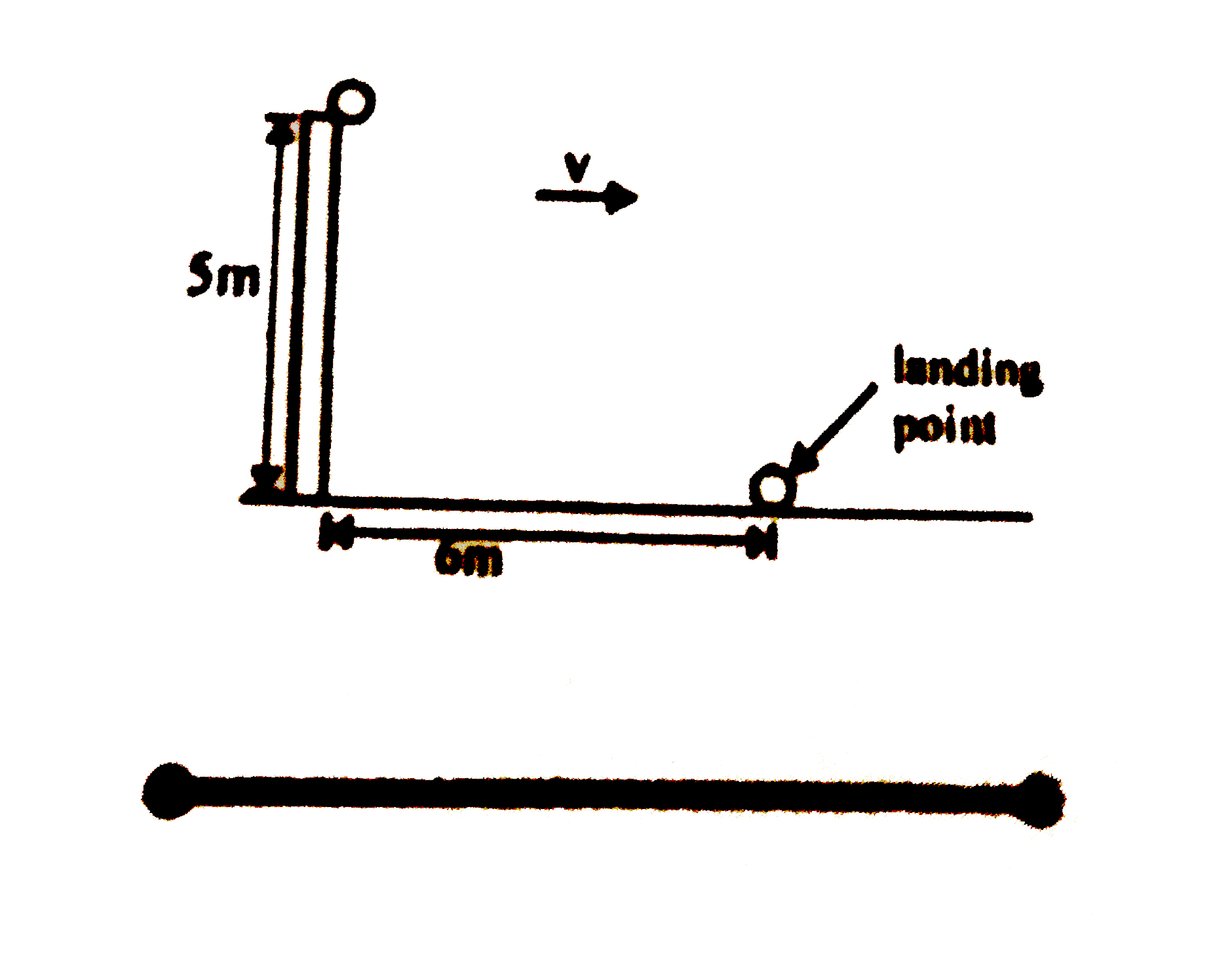A particle is dropped from rest from a large height Assume g to be constant throughout the motion. The time taken by it to fall through successive distance of 1m each will be :
All equal, being equal to √2/gsecond
In the ratio of the square roots roots of the integers 1, 2, 3,.............
In the ratio of the disfference in the square roots of the integers, i.e., sqrt1, (sqrt2, -sqrt1),(sqrt3-sqrt2), (sqrt4-sqrt3)......
In the ratio of the rectiprocals of the square roots of the integers, i.e., (1)/(sqrt1), (1)/(sqrt2), (1)/(sqrt(3),........
The correct Answer is:C
To solve the problem of finding the time taken by a particle to fall through successive distances of 1 meter each when dropped from rest, we will use the equations of motion under constant acceleration due to gravity.
1. Identify the Variables:
- Let g be the acceleration due to gravity (constant).
- Let Sn be the distance fallen after n seconds.
- Let Tn be the time taken to fall through Sn.
2. Use the Equation of Motion:
The equation of motion for an object falling from rest is given by:
S=ut+12gt2
Since the particle is dropped from rest, the initial velocity u=0. Therefore, the equation simplifies to:
Sn=12gT2n
3. Calculate Distances:
- For the first distance Sn:
Sn=12gT2n
- For the distance Sn+1 (which is Sn+1):
Sn+1=12gT2n+1
4. Set Up the Equations:
From the above, we have:
Sn=12gT2n
Sn+1=Sn+1=12gT2n+1
5. Substituting for Sn+1:
Substitute Sn into the equation for Sn+1:
12gT2n+1=12gT2n+1
6. Rearranging the Equation:
Rearranging gives:
12gT2n+1−12gT2n=1
Factor out 12g:
12g(T2n+1−T2n)=1
7. Solving for Time Difference:
Multiply both sides by 2g:
T2n+1−T2n=2g
This can be factored as:
(Tn+1−Tn)(Tn+1+Tn)=2g
8. Finding the Time for 1 Meter:
Let ΔT=Tn+1−Tn. Then:
ΔT(Tn+1+Tn)=2g
As n becomes large, Tn and Tn+1 approach the same value, so we can approximate:
ΔT≈2g⋅12Tn=1gTn
9. Final Expression:
Thus, the time taken to fall through successive distances of 1 meter becomes:
ΔT≈√2g⋅(√n+1−√n)
Conclusion:
The time taken by the particle to fall through successive distances of 1 meter is given by the expression derived above, which can be simplified further based on the values of n.
- Let g be the acceleration due to gravity (constant).
- Let Sn be the distance fallen after n seconds.
- Let Tn be the time taken to fall through Sn.
The equation of motion for an object falling from rest is given by:
S=ut+12gt2
Since the particle is dropped from rest, the initial velocity u=0. Therefore, the equation simplifies to:
Sn=12gT2n
- For the first distance Sn:
Sn=12gT2n
- For the distance Sn+1 (which is Sn+1):
Sn+1=12gT2n+1
From the above, we have:
Sn=12gT2n
Sn+1=Sn+1=12gT2n+1
Substitute Sn into the equation for Sn+1:
12gT2n+1=12gT2n+1
Rearranging gives:
12gT2n+1−12gT2n=1
Factor out 12g:
12g(T2n+1−T2n)=1
Multiply both sides by 2g:
T2n+1−T2n=2g
This can be factored as:
(Tn+1−Tn)(Tn+1+Tn)=2g
Let ΔT=Tn+1−Tn. Then:
ΔT(Tn+1+Tn)=2g
As n becomes large, Tn and Tn+1 approach the same value, so we can approximate:
ΔT≈2g⋅12Tn=1gTn
Thus, the time taken to fall through successive distances of 1 meter becomes:
ΔT≈√2g⋅(√n+1−√n)
The time taken by the particle to fall through successive distances of 1 meter is given by the expression derived above, which can be simplified further based on the values of n.
Topper's Solved these Questions
- KINEMATICS-1BOOK - CENGAGE PHYSICS ENGLISHCHAPTER - KINEMATICS-1EXERCISE - Graphical Concept
17 Videos
- KINEMATICS-1BOOK - CENGAGE PHYSICS ENGLISHCHAPTER - KINEMATICS-1EXERCISE - Graphical cancept
1 Video
- KINEMATICS-1BOOK - CENGAGE PHYSICS ENGLISHCHAPTER - KINEMATICS-1EXERCISE - Subjective
29 Videos
- GRAVITATIONBOOK - CENGAGE PHYSICS ENGLISHCHAPTER - GRAVITATIONEXERCISE - INTEGER_TYPE
1 Video
- KINEMATICS-2BOOK - CENGAGE PHYSICS ENGLISHCHAPTER - KINEMATICS-2EXERCISE - Exercise Integer
9 Videos
Similar Questions
A particle is dropped from point A at a certain height from ground. It falls freely and passes through thre points B,C and D with BC=CD. The time taken by the particle to move from B to CD is 2s and from C to D is 1s. The time taken to move from A to B is s
View SolutionA ball is dropped from the top of a tower of height (h). It covers a distance of h/2 in the last second of its motion. How long does the ball remain in air?
View SolutionA small iron ball falls from rest through a large height h into a water column, the final velocity
View SolutionA small drop of water falls from rest through a large height h in air, the final velocity is
View SolutionA ball is dropped from rest from a tower of height 5m. As a result of the wind it lands at a distance 6m from the bottom of the tower as shown. Assuming no air resistance but that the wind gives the ball a constant horizonta velocity v. Find value of v in m/s.

View SolutionA body dropped from the top of a tower covers 7/16 of the total height in the last second of its fall. The time of fall is
View SolutionA particle is dropped from rest from a height h0 on a horizontal floor. The coefficient of restitution between the floor and particle is e. Maximum height attained by the particle after first rebound is
View SolutionA body falls freely from a height of 125m (g=10m/s2) after 2 sec gravity ceases to act Find the time taken by it to reach the ground?
View SolutionA helicopter rises from rest on the ground vertically upwards with a constant acceleration g. A food packet is dropped from the helicopter when is at a height h. The time taken by the packet to reach the ground is close to [ g is the acceeration due to gravity] :
View SolutionA particle is dropped from top of tower. During its motion it covers 925 part of height of tower in last 1 sec. Then find height of the tower.
View Solution